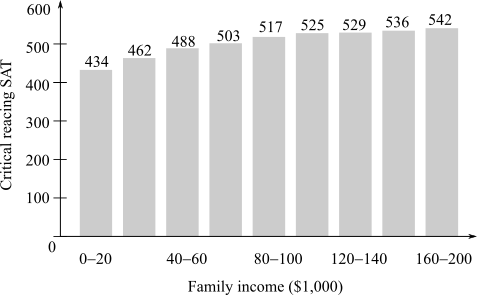Problem 1E: In Exercises 1-66, find the derivative of the function. [HINT: See Quick Example 5-14.] f(x)=ln(x1) Problem 2E Problem 3E: In Exercises 1-66, find the derivative of the function. [HINT: See Quick Example 5-14.] g(x)=lnx2+3 Problem 4E: In Exercises 1-66, find the derivative of the function. [HINT: See Quick Example 5-14.] g(x)=ln2x4 Problem 5E: In Exercises 1-66, find the derivative of the function. [HINT: See Quick Example 5-14.] f(x)=log2x Problem 6E: In Exercises 1-66, find the derivative of the function. [HINT: See Quick Example 5-14.] f(x)=log3x Problem 7E: In Exercises 1-66, find the derivative of the function. [HINT: See Quick Example 5-14.]... Problem 8E: In Exercises 1-66, find the derivative of the function. [HINT: See Quick Example 5-14.]... Problem 9E: In Exercises 1-66, find the derivative of the function. [HINT: See Quick Example 5-14.]... Problem 10E: In Exercises 1-66, find the derivative of the function. [HINT: See Quick Example 5-14.]... Problem 11E: In Exercises 1-66, find the derivative of the function. [HINT: See Quick Example 5-14.] h(x)=ex+3 Problem 12E: In Exercises 1-66, find the derivative of the function. [HINT: See Quick Example 5-14.] h(x)=ex2 Problem 13E: In Exercises 1-66, find the derivative of the function. [HINT: See Quick Example 5-14.] h(x)=ex2x+1 Problem 14E: In Exercises 1-66, find the derivative of the function. [HINT: See Quick Example 5-14.]... Problem 15E: In Exercises 1-66, find the derivative of the function. [HINT: See Quick Example 5-14.] r(x)=(e2x1)2 Problem 16E: In Exercises 1-66, find the derivative of the function. [HINT: See Quick Example 5-14.] r(x)=(e2x2)3 Problem 17E: In Exercises 1-66, find the derivative of the function. [HINT: See Quick Example 5-14.] g(x)=4x Problem 18E: In Exercises 1-66, find the derivative of the function. [HINT: See Quick Example 5-14.] g(x)=5x Problem 19E: In Exercises 1-66, find the derivative of the function. [HINT: See Quick Example 5-14.] h(x)=2x21 Problem 20E: In Exercises 1-66, find the derivative of the function. [HINT: See Quick Example 5-14.] h(x)=3x2x Problem 21E: In Exercises 1-66, find the derivative of the function. [HINT: See Quick Example 5-14.]... Problem 22E: In Exercises 1-66, find the derivative of the function. [HINT: See Quick Example 5-14.]... Problem 23E: In Exercises 1-66, find the derivative of the function. [HINT: See Quick Example 5-14.]... Problem 24E: In Exercises 1-66, find the derivative of the function. [HINT: See Quick Example 5-14.]... Problem 25E: In Exercises 1-66, find the derivative of the function. [HINT: See Quick Example 5-14.] g(x)=ln2x2+1 Problem 26E: In Exercises 1-66, find the derivative of the function. [HINT: See Quick Example 5-14.] g(x)=lnx2x Problem 27E: In Exercises 1-66, find the derivative of the function. [HINT: See Quick Example 5-14.]... Problem 28E: In Exercises 1-66, find the derivative of the function. [HINT: See Quick Example 5-14.]... Problem 29E: In Exercises 1-66, find the derivative of the function. [HINT: See Quick Example 5-14.]... Problem 30E: In Exercises 1-66, find the derivative of the function. [HINT: See Quick Example 5-14.]... Problem 31E: In Exercises 1-66, find the derivative of the function. [HINT: See Quick Example 5-14.]... Problem 32E: In Exercises 1-66, find the derivative of the function. [HINT: See Quick Example 5-14.]... Problem 33E: In Exercises 1-66, find the derivative of the function. [HINT: See Quick Example 5-14.]... Problem 34E: In Exercises 1-66, find the derivative of the function. [HINT: See Quick Example 5-14.]... Problem 35E: In Exercises 1-66, find the derivative of the function. [HINT: See Quick Example 5-14.]... Problem 36E: In Exercises 1-66, find the derivative of the function. [HINT: See Quick Example 5-14.]... Problem 37E: In Exercises 1-66, find the derivative of the function. [HINT: See Quick Example 5-14.]... Problem 38E: In Exercises 1-66, find the derivative of the function. [HINT: See Quick Example 5-14.]... Problem 39E: In Exercises 1-66, find the derivative of the function. [HINT: See Quick Example 5-14.]... Problem 40E: In Exercises 1-66, find the derivative of the function. [HINT: See Quick Example 5-14.] f(x)=1ln|x| Problem 41E: In Exercises 1-66, find the derivative of the function. [HINT: See Quick Example 5-14.]... Problem 42E: In Exercises 1-66, find the derivative of the function. [HINT: See Quick Example 5-14.]... Problem 43E: In Exercises 1-66, find the derivative of the function. [HINT: See Quick Example 5-14.] f(x)=xex Problem 44E: In Exercises 1-66, find the derivative of the function. [HINT: See Quick Example 5-14.] f(x)=2exx2ex Problem 45E Problem 46E Problem 47E Problem 48E Problem 49E Problem 50E Problem 51E Problem 52E Problem 53E Problem 54E Problem 55E Problem 56E Problem 57E: In Exercises 1-66, find the derivative of the function. [HINT: See Quick Example 5-14.]... Problem 58E: In Exercises 1-66, find the derivative of the function. [HINT: See Quick Example 5-14.]... Problem 59E: In Exercises 1-66, find the derivative of the function. [HINT: See Quick Example 5-14.] f(x)=1xlnx Problem 60E: In Exercises 1-66, find the derivative of the function. [HINT: See Quick Example 5-14.] f(x)=exxex Problem 61E: In Exercises 1-66, find the derivative of the function. [HINT: See Quick Example 5-14.]... Problem 62E: In Exercises 1-66, find the derivative of the function. [HINT: See Quick Example 5-14.]... Problem 63E: In Exercises 1-66, find the derivative of the function. [HINT: See Quick Example 5-14.] f(x)=ln|lnx| Problem 64E: In Exercises 1-66, find the derivative of the function. [HINT: See Quick Example 5-14.]... Problem 65E: In Exercises 1-66, find the derivative of the function. [HINT: See Quick Example 5-14.] s(x)=lnlnx Problem 66E: In Exercises 1-66, find the derivative of the function. [HINT: See Quick Example 5-14.] s(x)=ln(lnx) Problem 67E: In Exercises 67-72, find the equation of the straight line described. Use graphing technology to... Problem 68E: In Exercises 67-72, find the equation of the straight line described. Use graphing technology to... Problem 69E: In Exercises 67-72, find the equation of the straight line described. Use graphing technology to... Problem 70E: In Exercises 67-72, find the equation of the straight line described. Use graphing technology to... Problem 71E: In Exercises 67-72, find the equation of the straight line described. Use graphing technology to... Problem 72E: In Exercises 67-72, find the equation of the straight line described. Use graphing technology to... Problem 73E: In Exercises 73-78, use lHospitals rule to find the limits. [HINT: See Example 4.] limx+x+2ex Problem 74E: In Exercises 73-78, use lHospitals rule to find the limits. [HINT: See Example 4.] limx+x2+x+1ex Problem 75E: In Exercises 73-78, use lHospitals rule to find the limits. [HINT: See Example 4.] limx2x+3e2x Problem 76E: In Exercises 73-78, use lHospitals rule to find the limits. [HINT: See Example 4.] limxx22x+1e3x Problem 77E: In Exercises 73-78, use lHospitals rule to find the limits. [HINT: See Example 4.] limx0ex1x Problem 78E: In Exercises 73-78, use lHospitals rule to find the limits. [HINT: See Example 4.] limx0ex1xx2 Problem 79E: Research and Development: Industry The total spent on research and development by industry in the... Problem 80E: Research and Development: Federal The total spent on research and development by the federal... Problem 81E Problem 82E Problem 83E: Carbon Dating The age in years of a specimen that originally contained 10 grams of carbon 14 is... Problem 84E Problem 85E: New York City Housing Costs: Downtown The average price of a two-bedroom apartment in downtown New... Problem 86E: New York City Housing Costs: Uptown The average price of a two-bedroom apartment in uptown New York... Problem 87E: Big Brother The following chart shows the total number of wiretaps authorized each year by U.S.... Problem 88E: Big Brother The following chart shows the total number of wiretaps authorized each year by U.S.... Problem 89E: Investments If $10,000 is invested in a savings account offering 4% per year, compounded... Problem 90E: Investments If $20,000 is invested in a savings account offering 3.5% per year, compounded... Problem 91E: Investments If $10,000 is invested in a savings account offering 4% per year, compounded... Problem 92E: Investments If $20,000 is invested in a savings account offering 3.5% per year, compounded... Problem 93E Problem 94E: The 2003 SARS Outbreak A few weeks into the deadly SARS (severe acute respiratory syndrome) epidemic... Problem 95E Problem 96E Problem 97E Problem 98E: SAT Scores by Income The following bar graph shows U.S. critical reading SAT scores as a function of... Problem 99E Problem 100E Problem 101E: Epidemics A flu epidemic described in Example 1 in Section 2.4 approximately followed the curve... Problem 102E Problem 103E Problem 104E Problem 105E Problem 106E: Subprime Mortgage Debt during the Housing Bubble (Compare Exercise 104.) During the real estate... Problem 107E Problem 108E Problem 109E: Radioactive Decay Plutonium 239 has a half-life of 24,400 years. How fast is a lump of 10 grams... Problem 110E: Radioactive Decay Carbon 14 has a half-life of 5,730 years. How fast is a lump of 20 grams decaying... Problem 111E: Cellphone Revenues The number of cellphone subscribers in China for the period 20002005 was... Problem 112E: Cellphone Revenues The annual revenue for cellphone use in China for the period 20002005 was... Problem 113E: Complete the following: The derivative of e raised to a glob is . Problem 114E: Complete the following: The derivative of the natural logarithm of a glob is Problem 115E: Complete the following: The derivative of 2 raised to a glob is . Problem 116E: Complete the following: The derivative of the base 2 logarithm of a glob is . Problem 117E: What is wrong with the following? ddxln|3x+1|=3|3x+1| X WRONG! Problem 118E: What is wrong with the following? ddx22x=(2)22x X WRONG! Problem 119E: What is wrong with the following? ddx32x=(2x)32x1 X WRONG! Problem 120E Problem 121E Problem 122E Problem 123E Problem 124E Problem 125E Problem 126E format_list_bulleted





 College AlgebraAlgebraISBN:9781305115545Author:James Stewart, Lothar Redlin, Saleem WatsonPublisher:Cengage Learning
College AlgebraAlgebraISBN:9781305115545Author:James Stewart, Lothar Redlin, Saleem WatsonPublisher:Cengage Learning Algebra & Trigonometry with Analytic GeometryAlgebraISBN:9781133382119Author:SwokowskiPublisher:Cengage
Algebra & Trigonometry with Analytic GeometryAlgebraISBN:9781133382119Author:SwokowskiPublisher:Cengage Big Ideas Math A Bridge To Success Algebra 1: Stu...AlgebraISBN:9781680331141Author:HOUGHTON MIFFLIN HARCOURTPublisher:Houghton Mifflin Harcourt
Big Ideas Math A Bridge To Success Algebra 1: Stu...AlgebraISBN:9781680331141Author:HOUGHTON MIFFLIN HARCOURTPublisher:Houghton Mifflin Harcourt Functions and Change: A Modeling Approach to Coll...AlgebraISBN:9781337111348Author:Bruce Crauder, Benny Evans, Alan NoellPublisher:Cengage Learning
Functions and Change: A Modeling Approach to Coll...AlgebraISBN:9781337111348Author:Bruce Crauder, Benny Evans, Alan NoellPublisher:Cengage Learning Algebra and Trigonometry (MindTap Course List)AlgebraISBN:9781305071742Author:James Stewart, Lothar Redlin, Saleem WatsonPublisher:Cengage Learning
Algebra and Trigonometry (MindTap Course List)AlgebraISBN:9781305071742Author:James Stewart, Lothar Redlin, Saleem WatsonPublisher:Cengage Learning




